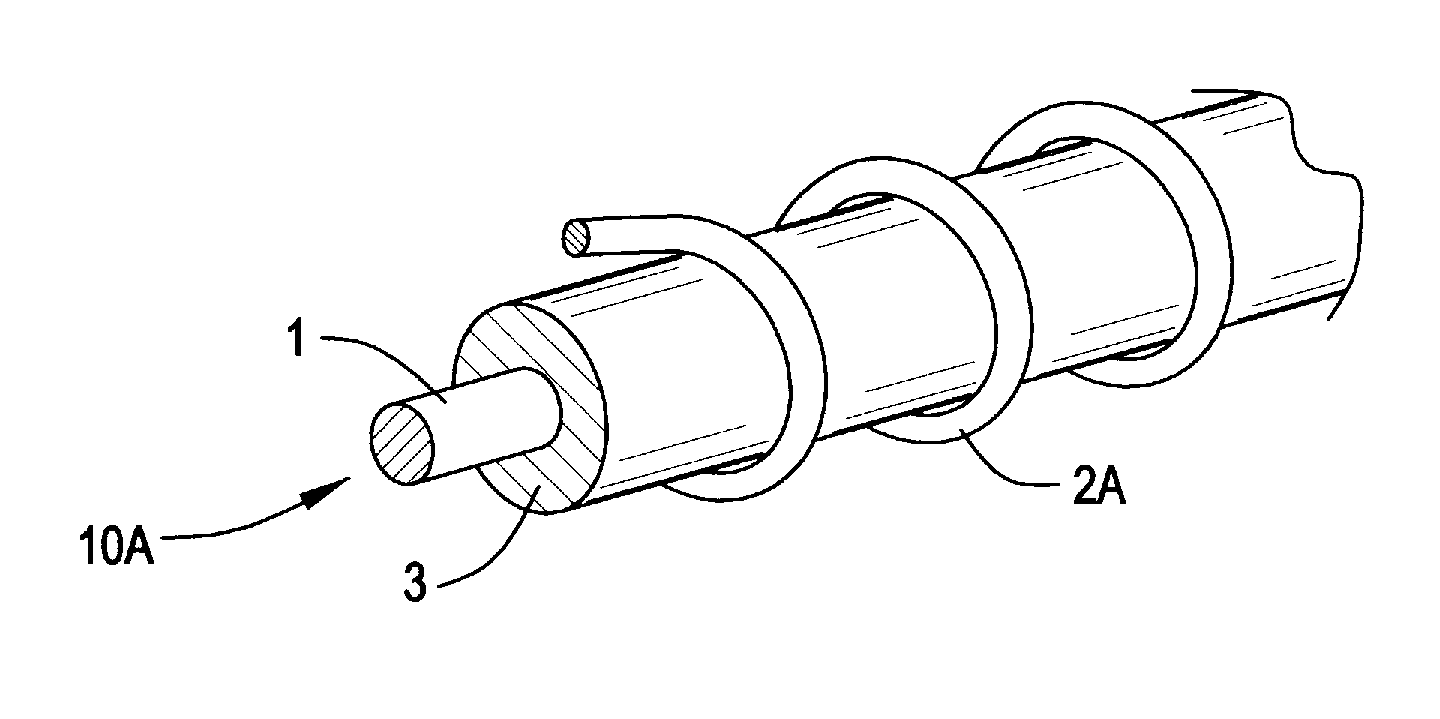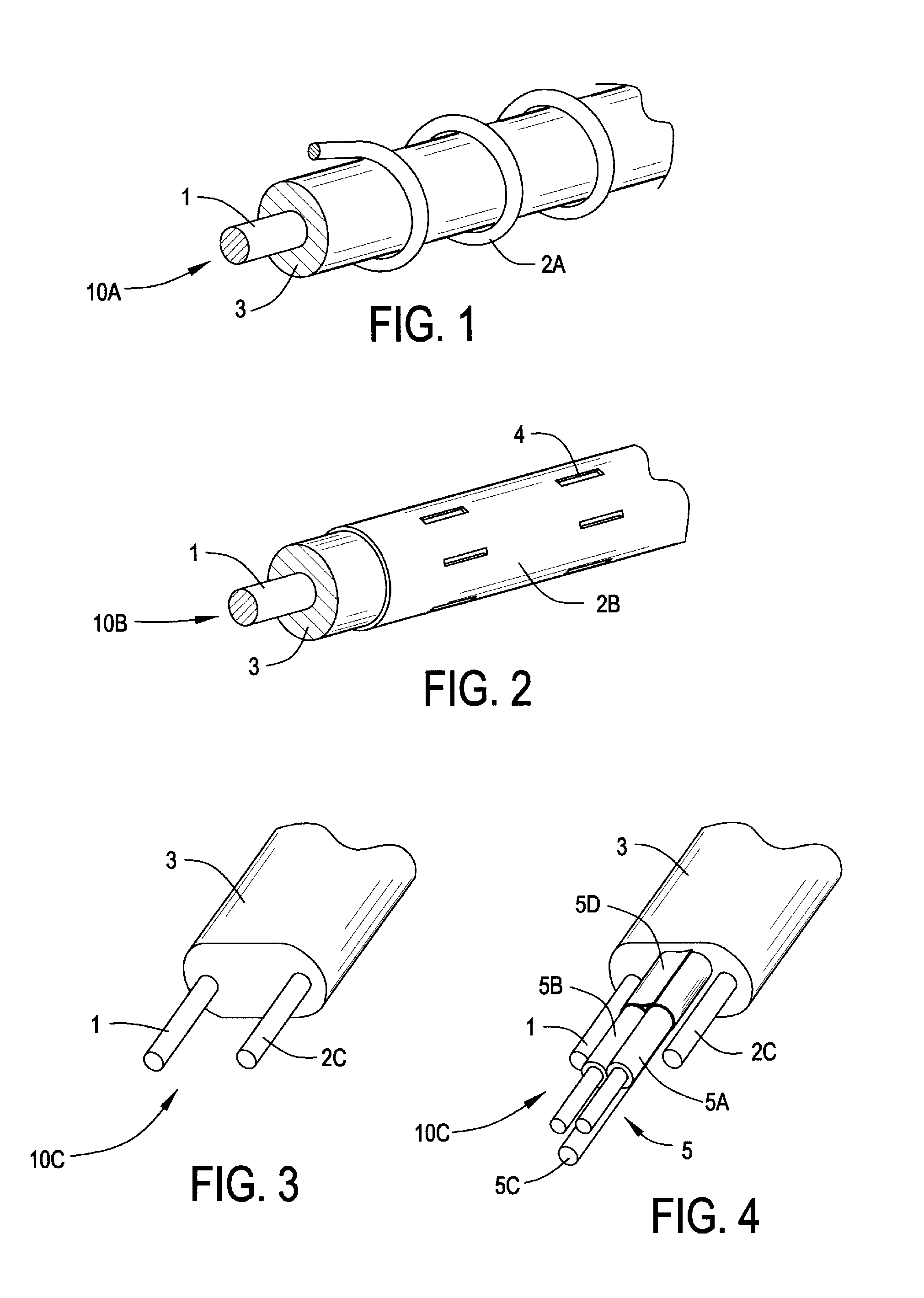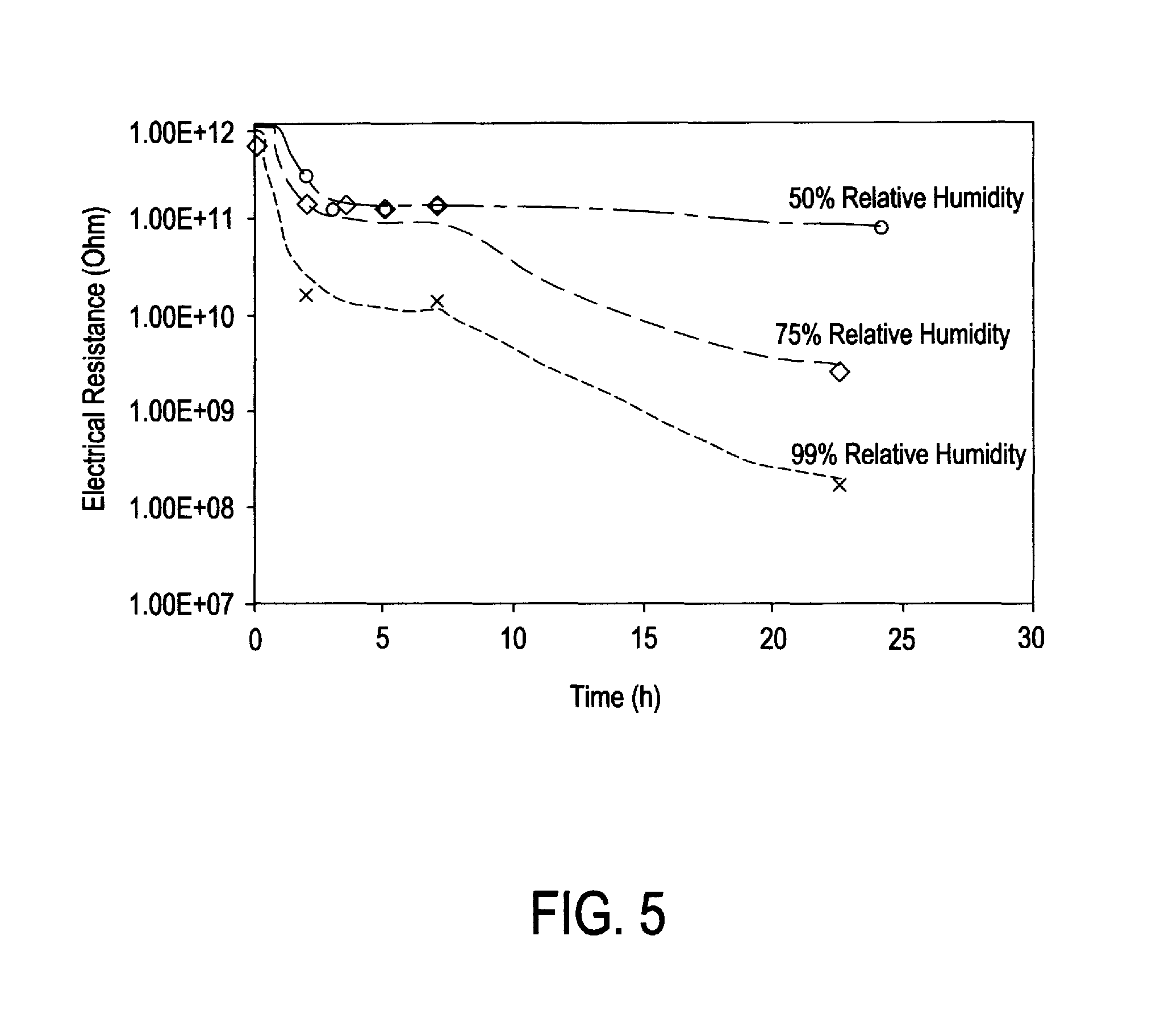Electrical device for detecting moisture
a technology of electrical devices and moisture, applied in the direction of fluid tightness measurement, instruments, structural/machine measurement, etc., can solve the problems of inability to use more than one electrical device of the prior art, unsanitary home, and the cost of such a device ultimately proves to be relatively high in relation to its use, so as to achieve less temperature sensitive and easy to implement
- Summary
- Abstract
- Description
- Claims
- Application Information
AI Technical Summary
Benefits of technology
Problems solved by technology
Method used
Image
Examples
examples
[0079]A detection cable as depicted in FIG. 3 is produced using two copper wires of 1.5 mm2 cross section laid parallel to one another in a first example of non-soluble and moisture-sensitive polymer material, the distance between the two copper wires being kept constant at 1 mm. The thickness of the layer of polymer material covering the two wires is also 1 mm. Said polymer material, which is extruded around these two copper wires, is made up of:[0080]an ethylene vinyl acetate copolymer containing 28% of vinyl acetate groups, marketed by Exxon Mobil under the reference Escorène UL 0328, and[0081]approximately 150 parts by weight of an inorganic desiccant filler as anhydrous calcium sulfate marketed by WA Hammond Drierite LTD under the reference Drierite.
[0082]The detection cable thus obtained is 5 meters long. The two copper wires of one of the ends of the detection cable are connected to a megohmmeter to measure the electrical resistance between the two copper wires. The detection...
PUM
 Login to View More
Login to View More Abstract
Description
Claims
Application Information
 Login to View More
Login to View More - R&D
- Intellectual Property
- Life Sciences
- Materials
- Tech Scout
- Unparalleled Data Quality
- Higher Quality Content
- 60% Fewer Hallucinations
Browse by: Latest US Patents, China's latest patents, Technical Efficacy Thesaurus, Application Domain, Technology Topic, Popular Technical Reports.
© 2025 PatSnap. All rights reserved.Legal|Privacy policy|Modern Slavery Act Transparency Statement|Sitemap|About US| Contact US: help@patsnap.com



